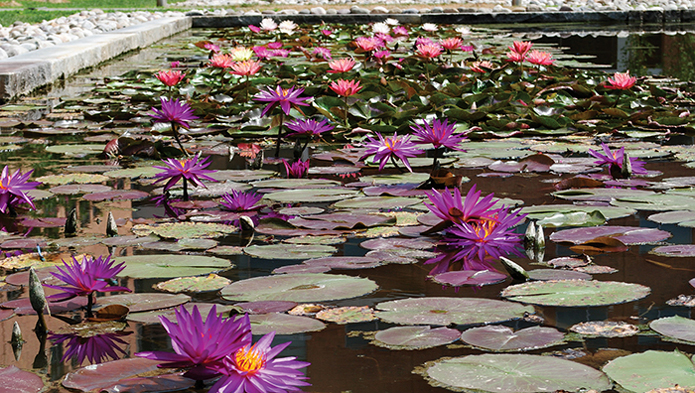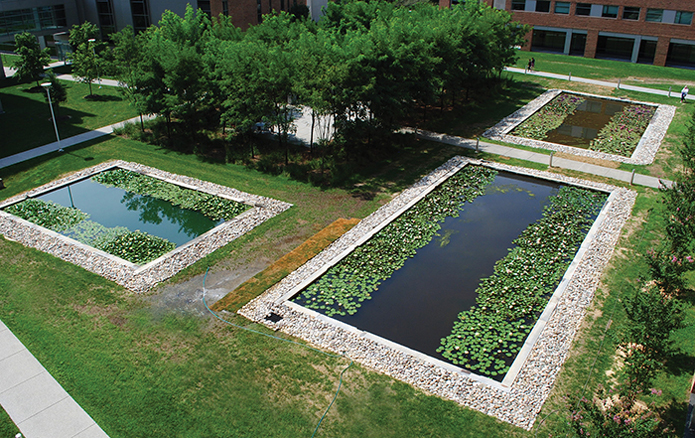
In summer 2018, Darren DeStefano, a horticulturist at the General Services Administration (GSA) Public Building Service National Capital Region, and Claro Rodriguez from Plant or Transplant collaborated with me to create the U.S. Food and Drug Administration (FDA)’s now prominent waterlily feature. DeStefano designed a feature that is equal parts reflection, color and simplicity. Rodriguez mastered the deliberate construction, and I created the planting scheme — a statement of transition from the 1880s to modern hybrids.
The grand and straightforward display was intended to provide a destination and a hub of activity, not only for dragonflies, bees, butterflies and birds, but also for the building’s employees. If its success were measured by attendance, then the flurry of continual activity would be the testament.Finite vs. Infinite
A reflection of Allan McCollum’s interior work suggests that combinations can be finite or infinite. As for waterlilies, diversification through hybridization has an endless portrayal of color, accomplishment and discovery. This is a finite display of accomplishments and a representation of a potentially infinite number of undiscovered possibilities.
We began with a classic white hybrid from the late 1800s, Nymphaea x marliacea ‘Albida’, from the infamous hybridizer Joseph Bory Latour-Marliac. This hybrid is as exceptional today as it was then. It is still as highly suited to the earth-bottom ponds of modern day as it was befitting for Claude Monet’s Giverny.


[box style=”rounded”]Before March 2014, left, and then after August 2018, right.[/box]
There were many new introductions over the years, but it wasn’t until the 1990s that the pace quickened. Dr. Kirk Strawn introduced hybrids with a new parent, Nymphaea mexicana. With that, new color combinations and the discovery of colors not previously known in the world of
waterlilies were introduced, like peach and apricot, for example. New attributes like flower size have increased in relationship to foliage, with some flowers as large or larger than the leaves. Traditionally situated just above the water, mexicana hybrids gave rise to blossoms standing well above the foliage, mimicking the semi-tropical behavior of one of the parents.
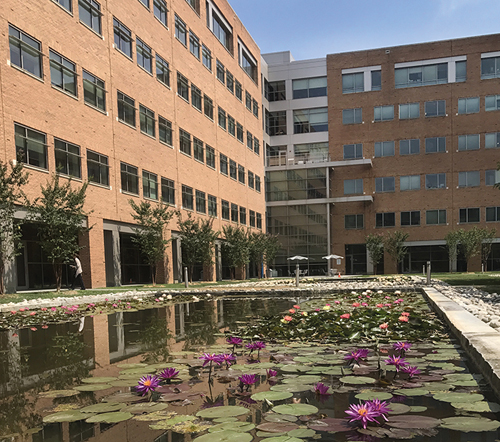
Strawn’s breakthroughs were significant and complemented other hybridizer achievements.
The creation of new hybrids shifted the focus to the elusive blue and purple color only known to
tropical day-blooming waterlilies. Zijun Li’s ‘Detective Erika’ has become the crown jewel of purple hardies, with abundant flowering and striking foliage. It is befitting that it ends the display with jewel-colored purple flowers in magnificent numbers.
My artistic use of a waterlily timeline was inspired by the efforts of hybridizers. As an ardent lover of both old and new cultivars, I had a unique opportunity to characterize their strengths and changes within a specific timeline. It is with deep appreciation that we recognize all the hybridizers for their tedious work creating sumptuous waterlilies to for all to enjoy.
A Complementary Trio
DeStefano is responsible for many of the magnificent gardens on federal properties throughout the Washington, D.C. area under the GSA umbrella. His work is renowned for the heavy use of native and select ornamental plants. There is often a subtle mutation that takes place when the introduction of new plants spread by wind, birds and the like appear on their own. Sometimes they are culled out, and other times they complement the garden and can remain.
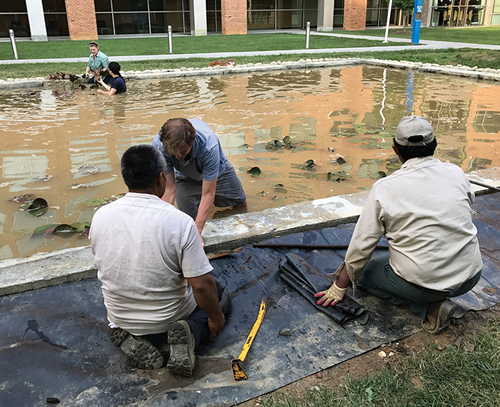
He just has that kind of vision. Few people are capable of his ability to manipulate cold, hard surfaces into calculated mosaics of texture, depth and color with purpose. Unsuspected occurrences are his specialty.
Rodriguez navigates infrastructure with foresight and understanding. Both stem from his years of experience and acute attention to details. He has been in tune with gardens, construction and their needs for many years. A former caretaker of the FDA gardens, he has gone on to develop his own company. Plant or Transplant serves the D.C. metropolitan area.
As far as I am concerned, I’m intent on the creative use of aquatic plants. The opportunity to use plants in an artistic manner while encompassing a historical perspective at the same time was appropriate for the site and met the criteria for the final display.
Art in Architecture
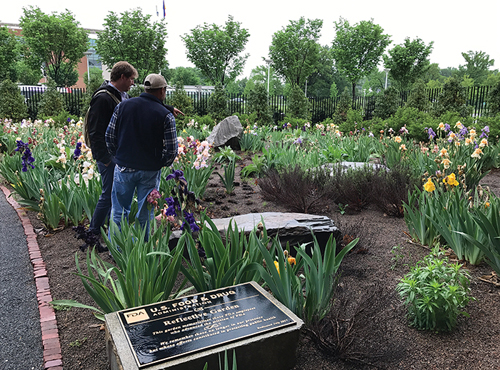
The GSA White Oak campus totals 670 acres, with the FDA occupying 130 of them. Before 1993, it was the site of the Department of the Navy’s Dahlgren Division, Naval Surface Warfare Center. The property sits just about a mile north of the Washington, D.C., beltway. To serve as a suitable site for the FDA, all the naval buildings were destroyed except for the main entrance building. It is a bit of an architectural wonder that all the site buildings are taller than the main entrance building, but they are unable to be seen — some are partially sunken below ground.
The GSA has implemented a program called Art in Architecture, which is supported by one-half
of one percent of the costs of modernization, repair and alterations of all new federal office buildings. Artists are selected to create pieces that enhance the overall project, showcase visual arts and provide a legacy for the citizens of the country. The projects on the FDA campus are large scale and have a significant presence throughout the halls and common areas. Likewise, the courtyard gardens are powerful and equally impressive.
